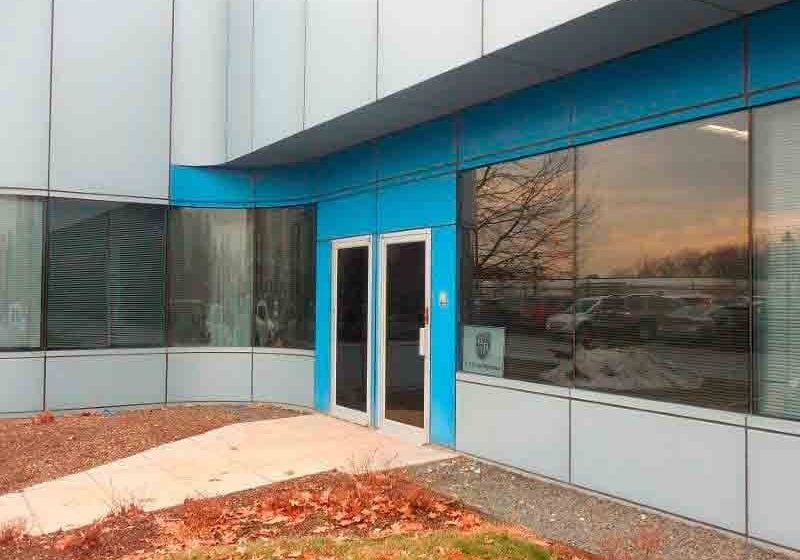Defining Success
Mar 1, 2018

Wittur’s versatile WSG-21 proves to be the right choice for hospital modernization.
by Carlo Ferrari and Tommaso Sala
Success in the design and assembly of an elevator is sometimes difficult to define. In the case of special panoramic elevators, the outward appearance is, in most cases, the X factor: glass and mirror-finished steel structure, special lights, aesthetically pleasing cars and, sometimes, out-of-the-ordinary shapes attract everybody’s attention.
Another case in point are high-rise elevators. Speed is crucial here, but ride comfort comes in a close second among the parameters for judgment. A high-rise elevator should also be nice, but, first and foremost, it must be fast and comfortable.
When dealing with elevators in residential installations, the deciding factor is not usually what is visible. Here, what’s normally most important is the price-to-performance ratio. As long as a residential elevator offers reliable service, finding the lowest cost takes prominence.
This leaves us with an intermediate range of elevators: from those installed in offices, designed to comply with accessibility needs, to those operating in public spaces, which provide mobility to those inside large buildings. There is a mixed bunch of concepts in this broad category, and some specialized elevators for niche markets are normally part of it. This would include installations in hotels, subways, rail stations and factories. You can even find elevators designed for very intensive use and associated with special activities performed 24/7: elevators in hospitals, for example.
Hospital Elevator Design
Let’s try to define success in the design of an elevator for a hospital. Such vertical-transportation systems should offer a high level of ride comfort, as some people with mobility problems will be using it. It should be fast, to avoid queues, and reliable, as nothing would give more discomfort to patients than having a whole section of a hospital barely accessible because of an elevator failure.
There are some special executions for hospital elevators in the elevator designer’s bags of tricks: hidden sills that allow the most comfort for patients on gurneys being moved in and out of elevator cars; special wall finishes and reinforcements (including bumpers and skirting boards) to cope with intensive use; and heavy-duty doors, preferably with stainless-steel finishes for better impact resistance.
The choice of drives for hospital elevators is also important. There are many types of hospitals and hospital elevators, so being able to cover the widest range of rated-load and rated-speed combinations is a big bonus, as it allows the elevator designer to standardize on one machine for most installations. This means easier design, reuse of bedplate arrangements, easier maintenance and reduced spare parts inventory.
Versatility Is Key
WSG-21, designed and manufactured by Wittur Electric Drives in Dresden, Germany, covers a broad range of rated loads and speeds. Rope tension in all directions is useful for making the elevator design easier, as well as allowing the possible use of different traction sheaves and rope diameters. In fact, WSG-21 can be customized for each installation with variable options regarding voltage, speed, torque and measuring system. It can even be supplied with two or three multipole spring-operated brakes, also suitable for an unintended-car-movement solution. It is UL-CSA approved and certified according to EN 81-20/-50. Its 22-pole internal design, using high-efficiency permanent magnets, offers reduced energy consumption and extremely low operating noise.
Its rated loads up to approximately 3000 kg (2:1) or 1600 kg (1:1), and rated speeds up to 5 mps (2:1) or 10 mps (1:1), combine with a small footprint and relatively light structure (total weight of 1300 kg) to make it easy to insert WSG-21 in machine rooms with several adjacent units.
Putting Versatility to Good Use
The same considerations for successful elevator design are also applicable to modernization. The technicians of ANSA Elevators, Ltd., in Manchester, U.K., when tasked with the modernization of 12 existing elevators at the Royal Hallamshire Hospital in Sheffield, U.K., found the WSG-21 to provide the ability to adapt to the elevators’ design parameters with minimal changes (Table 1), a crucial factor to ensure the project’s feasibility. ANSA ordered several WSG-21 units for this modernization: the first was installed at the end of 2017, and the others were scheduled to follow shortly.
Wittur U.K. offered an extensive package of components designed to work together. Wittur not only supplied the gearless machines for the 12 elevators, but also the machine bedplates, car and landing doors, cars, car slings, counterweight frames, safety gears, overspeed governors, and roller guides in a complete kit, along with extensive engineering services.
Get more of Elevator World. Sign up for our free e-newsletter.









